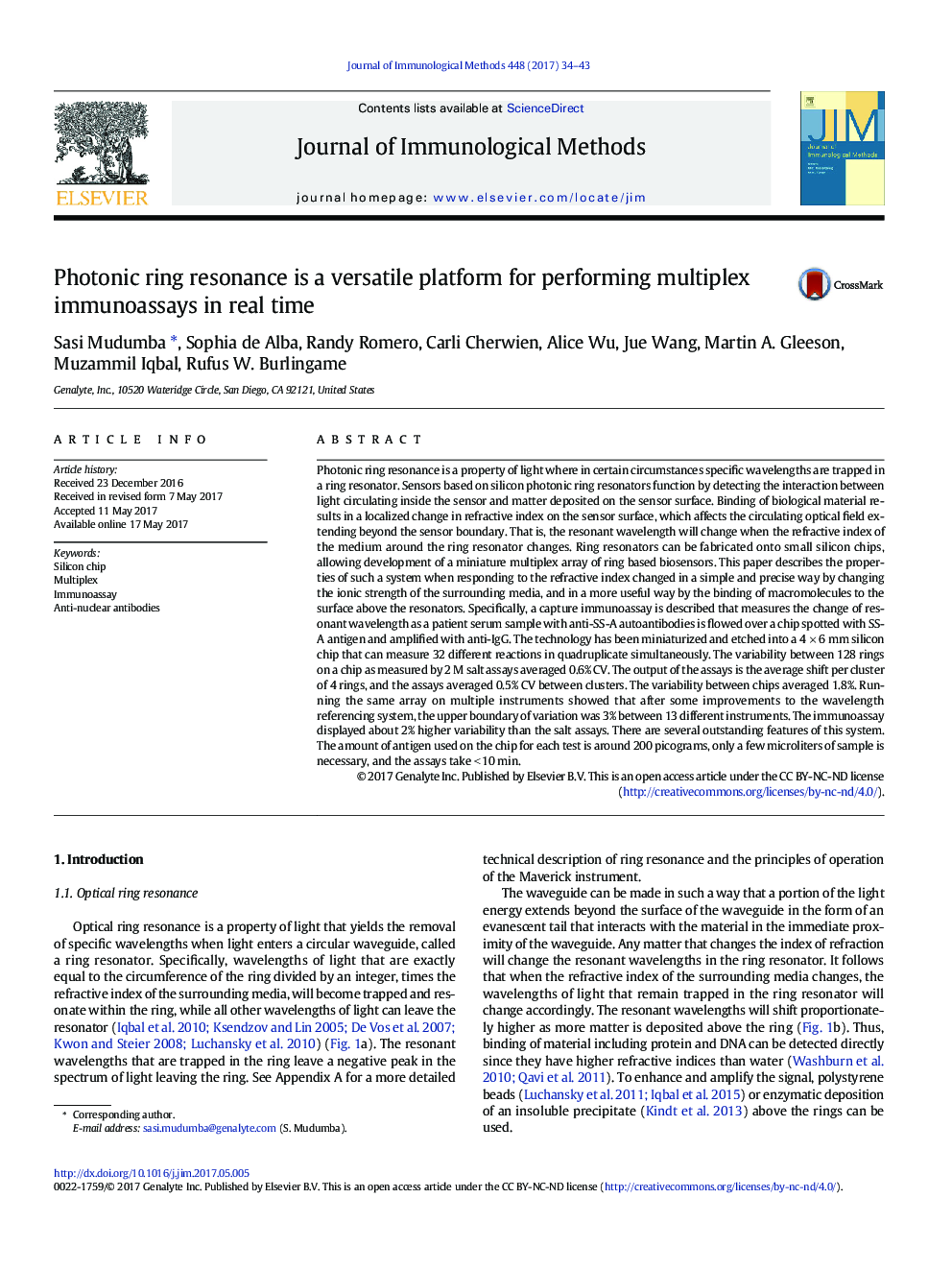| کد مقاله | کد نشریه | سال انتشار | مقاله انگلیسی | نسخه تمام متن |
|---|---|---|---|---|
| 5521972 | 1545661 | 2017 | 10 صفحه PDF | دانلود رایگان |
Photonic ring resonance is a property of light where in certain circumstances specific wavelengths are trapped in a ring resonator. Sensors based on silicon photonic ring resonators function by detecting the interaction between light circulating inside the sensor and matter deposited on the sensor surface. Binding of biological material results in a localized change in refractive index on the sensor surface, which affects the circulating optical field extending beyond the sensor boundary. That is, the resonant wavelength will change when the refractive index of the medium around the ring resonator changes. Ring resonators can be fabricated onto small silicon chips, allowing development of a miniature multiplex array of ring based biosensors. This paper describes the properties of such a system when responding to the refractive index changed in a simple and precise way by changing the ionic strength of the surrounding media, and in a more useful way by the binding of macromolecules to the surface above the resonators. Specifically, a capture immunoassay is described that measures the change of resonant wavelength as a patient serum sample with anti-SS-A autoantibodies is flowed over a chip spotted with SS-A antigen and amplified with anti-IgG. The technology has been miniaturized and etched into a 4Â ÃÂ 6Â mm silicon chip that can measure 32 different reactions in quadruplicate simultaneously. The variability between 128 rings on a chip as measured by 2Â M salt assays averaged 0.6% CV. The output of the assays is the average shift per cluster of 4 rings, and the assays averaged 0.5% CV between clusters. The variability between chips averaged 1.8%. Running the same array on multiple instruments showed that after some improvements to the wavelength referencing system, the upper boundary of variation was 3% between 13 different instruments. The immunoassay displayed about 2% higher variability than the salt assays. There are several outstanding features of this system. The amount of antigen used on the chip for each test is around 200 picograms, only a few microliters of sample is necessary, and the assays take <Â 10Â min.
Journal: Journal of Immunological Methods - Volume 448, September 2017, Pages 34-43
